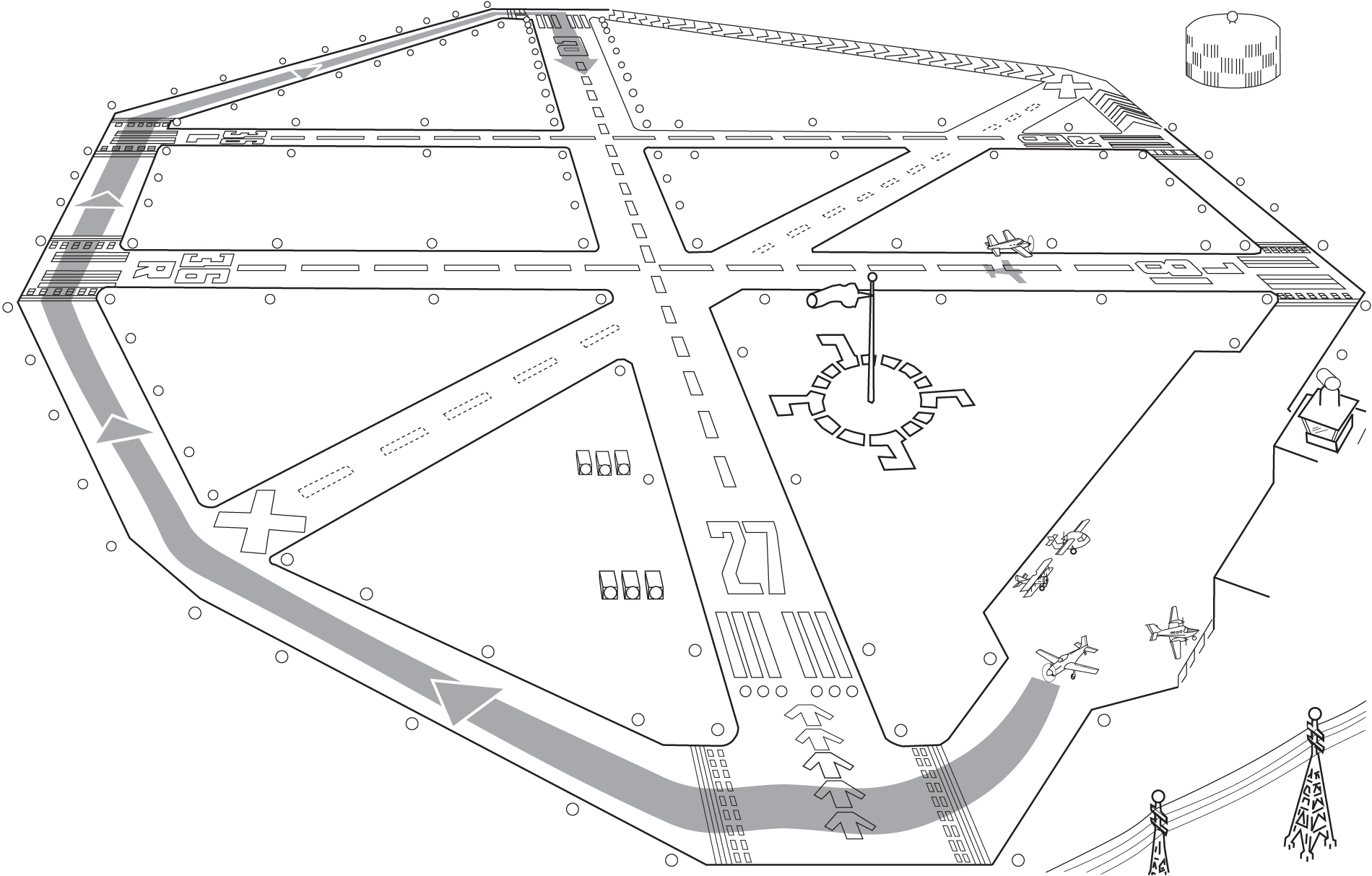We’ve talked a lot about communications so far on the Learn to Fly Blog. Today we’ll get into communications at towered airports. This post comes from the latest edition (twelfth!) of Bob Gardner’s essential flying textbook The Complete Private Pilot.
Airspace around an airport with an operating control tower is Class D airspace (unless it is within Class B airspace); it will usually extend vertically to 2,500 feet above airport elevation and horizontally a nominal 4.4 nautical miles (the boundaries may vary, but will be charted). If you need to enter Class D airspace, you must first communicate with the tower. If you are departing, you must first receive taxi instructions (not a “taxi clearance”) from the ground controller, who directs all activity on the ramps and taxiways. With few exceptions, ground control operates on 121.6, 121.7, 121.8, or 121.9 MHz. Controllers will frequently shorten this by eliminating the 121: “Contact ground point seven leaving the runway.”
The ground controller will authorize you to taxi to the runway in use, but you must stop before crossing any taxiways or runways (active or not) and receive permission to cross. Think of it as a stoplight at every intersection that glows red until the controller turns it to green. The figure below illustrates a situation where a pilot taxiing from the ramp to the runup area for runway 9 would receive authorization for the whole route, but would be told to hold short of runway 27. With permission to cross, he or she would proceed to the unmarked intersection with the closed runway, stop, call for permission, and the procedure would be repeated at the hold lines for runways 36R and 36L. It is the controller’s responsibility to issue precise instructions, but if you are getting close to any kind of intersection without having heard from the tower, stop and ask.

Note: Ground controllers do not use the word “cleared,” because it might be misconstrued as a takeoff clearance…they say “taxi to” or “taxi across.” If you are directed to “hold short” of a runway you must read that instruction back to the controller verbatim…nothing else will suffice. To avoid a runway incursion, always stop and ask for clarification of any instruction you do not understand. “What do you want me to do?” works just fine.
If you are at an unfamiliar airport, do not hesitate to ask for “progressive taxi instructions” and the controller will guide you to your destination on the field. “Student pilot” is a useful phrase to include in your transmissions.
When you are ready for takeoff, contact the tower controller for takeoff clearance. The tower (or “local”) controller is responsible for all aircraft in Class D airspace and on the active runway—don’t taxi onto the runway without a clearance. You must maintain communication with the tower controllers while you are in their airspace (Class D), but remember that separation from other airplanes is your responsibility; don’t expect the controller to keep you from swapping paint. When you have departed Class D airspace you are on your own (or you may request radar services). You do not have to ask the tower for permission to change frequencies after you have crossed the Class D airspace boundary.
On arrival, before you enter Class D airspace you should listen to the ATIS (if there is one) and advise the tower controller on initial contact that you have the ATIS information. Where there is no ATIS, listen on the tower frequency and note the instructions given to other pilots. Once you are sure of the runway in use, wind, and altimeter setting, you can say: “Miami Tower, Baron 2345X ten miles west with the numbers.” After landing, do not change to ground control until advised to do so by the tower. Some tower-controlled airports have UNICOM, but because you will get all of your weather information and clearances from the tower, your use of UNICOM at that tower-controlled airport will be limited to such things as calling for fuel, ordering rental cars, etc. Note: Towers report wind direction relative to magnetic north. In fact, any wind direction you receive by radio is referenced to magnetic north; winds in written form, such as forecasts, are referenced to true north.
If you have any questions about how your flight was handled by the tower, call as soon as practicable and talk to a quality assurance person before the tapes are erased—don’t expect an answer if you wait more than 15 days.
If an airport does not have an ATIS and does not use the primary control tower frequency as the CTAF, its data block will include “VFR Advisory—125.0”; if, of course, 125.0 is the frequency to use.
We’ll be back on Thursday with more from our CFI. If you’d like to receive new posts by email, subscribe using the form at the top of the sidebar to the right!




